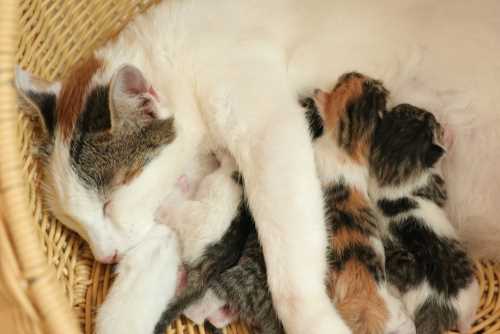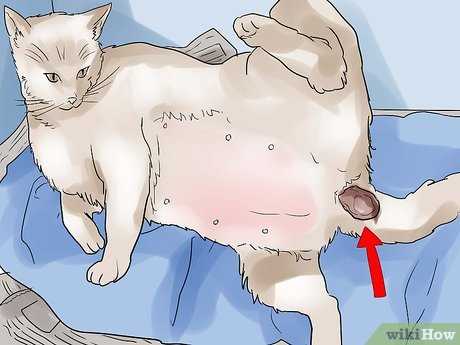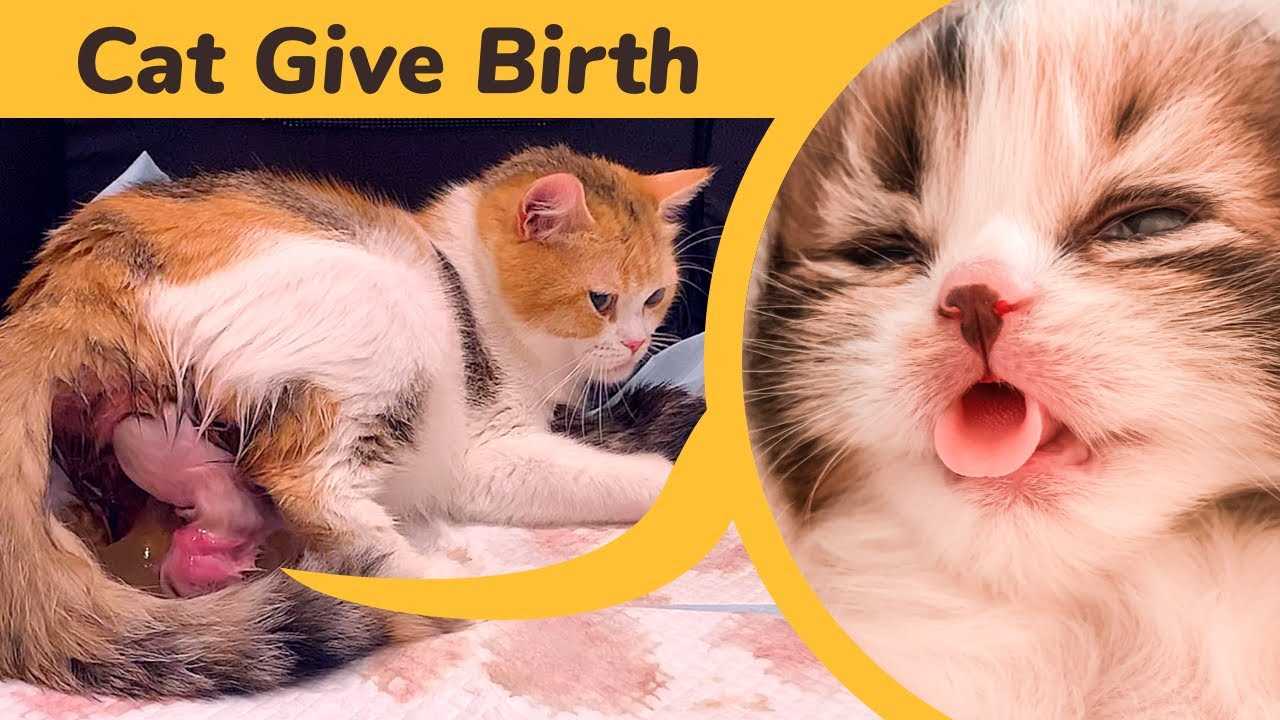



Ensure the area is clean and safe for the mother and her new offspring. This means removing any potential hazards and providing a quiet space away from noise and disturbances. A cozy bed made from soft, clean materials can help the mother feel secure.
Monitor the mother closely for the first few days. It’s vital to watch for any signs of distress or complications. If she seems lethargic or refuses to care for her kittens, consult a veterinarian immediately. Regular health check-ups for the little ones are also essential to catch any potential issues early.
Feeding the nursing mother is crucial. A high-quality diet rich in nutrients helps her recover from the ordeal and provides the necessary energy for milk production. Fresh water should always be available to keep her hydrated.
Limit visitors and disturbances during this time. The mother needs to bond with her kittens without interruptions. Keeping a low profile will help her feel comfortable and secure in her new role.
As the kittens grow, begin socializing them gently. Early interactions with humans can foster friendly, well-adjusted pets. Introduce new experiences gradually to help them adapt to their surroundings.
Assessing the Health of the Mother Cat
Check for any signs of distress or discomfort in the queen. Observe her behavior; if she seems overly agitated or lethargic, it’s a signal to investigate further.
Monitor her appetite closely. A healthy feline should show interest in food. If she refuses meals for more than a day, consider contacting a veterinarian.
Examine her body for any abnormalities. Look for swelling or redness around the nipples, which could indicate infection. Pay attention to her fur; excessive shedding or bald patches may also signal health concerns.
Keep an eye on her hydration. Ensure she has access to fresh water at all times. Dehydration can quickly become a serious issue, especially during nursing.
Watch her weight. A mother should maintain a stable weight during lactation. Significant weight loss or gain may indicate underlying problems.
Observe her litter size and behavior. If she seems disinterested in her kittens or if the kittens are not gaining weight, it could suggest issues with milk production or health complications.
Regularly check her temperature. A normal feline temperature ranges from 100.5°F to 102.5°F. Any deviations could require veterinary attention.
Lastly, ensure she has a quiet, comfortable space for recovery. Stress can hinder her ability to care for her new family, so a calm environment is key.
Creating a Safe Space for the Kittens
Choose a quiet, warm area for the new arrivals. A small room or a cozy corner works well. Use soft bedding like towels or blankets to create a comfortable nest. Ensure that the space is clean and free from potential hazards such as electrical cords or small objects that could be swallowed.
Set up a box or a crate with low sides, allowing easy access for the mother and her little ones. Line it with clean, soft materials to help keep the kittens warm. The box should be large enough for the mother to stretch out but snug enough to feel secure.
Maintain a stable temperature in the area. Kittens cannot regulate their body heat effectively, so it’s crucial to keep the environment warm, ideally around 75-80°F (24-27°C). If necessary, use a heating pad on low, but ensure it’s covered with a blanket to prevent direct contact.
Limit access to the safe space. Introduce a door or barrier to keep out other pets and curious humans. This helps the mother feel secure and reduces stress for everyone.
Monitor the environment regularly. Check for cleanliness and remove any waste or soiled bedding daily. Fresh air is also important, so allow ventilation while ensuring the area remains warm.
Provide fresh water and high-quality food for the mother within her reach. This ensures she stays hydrated and nourished while caring for her kittens.
Here’s a quick checklist for setting up the safe space:
| Item | Purpose |
|---|---|
| Box or crate | Safe nesting area |
| Soft bedding | Comfort and warmth |
| Heating pad | Temperature regulation |
| Barrier or door | Security and privacy |
| Fresh water | Hydration for the mother |
| High-quality food | Nourishment for the mother |
Understanding Kitten Care and Feeding

Providing proper nutrition is key for the little ones. Always ensure they have access to their mother’s milk for the first few weeks. If the queen is unable to nurse, use a high-quality kitten milk replacer. Regular cow’s milk isn’t suitable and can cause tummy troubles.
Feeding Schedule
- For the first 4 weeks: Allow nursing as needed.
- From weeks 4 to 6: Introduce wet kitten food alongside nursing.
- At 6 weeks: Gradually shift to dry kibble, ensuring it’s formulated for kittens.
Hydration

Fresh water should always be available. Start introducing it around the 4-week mark to encourage healthy habits.
Monitor each kitten’s growth. Weigh them weekly to confirm they are gaining weight consistently. If any little one appears lethargic or isn’t feeding well, consult a vet promptly.
Social interaction is equally important. Handle the kittens regularly to help them become well-adjusted and friendly. Playtime with toys can stimulate their development and strengthen their bond with humans.
Monitoring the Kittens’ Development
Track the growth of each little one by weighing them daily for the first two weeks. A steady weight increase indicates good health. Weigh them in the morning before feeding to ensure accuracy.
Observation of Milestones
Watch for key developmental stages. By two weeks, eyes will begin to open, and by three weeks, they’ll start walking. Encourage exploration by providing safe spaces for them to roam. This helps build their confidence and physical skills.
Social Interaction
Interaction with their mother and littermates is crucial. Observe their play patterns; this teaches them social skills. If any kitten seems isolated, gently encourage social engagement with the others. If you notice unusual behavior or lack of progress, consult a veterinarian.
For maintaining a comfortable environment, consider using a best trim air compressor to keep the air fresh and help with temperature control. A consistent environment aids their growth.
Recognizing Signs of Complications
If any unusual behavior occurs, immediate attention may be necessary. Watch for excessive bleeding, difficulty moving, or signs of pain from the mother. These could indicate problems requiring veterinary care.
Signs of Distress
A mother in distress may vocalize more than usual or isolate herself from her kittens. Monitor her eating habits; loss of appetite can signal health issues. Restlessness or excessive grooming may also suggest discomfort.
Kitten Health Indicators
Kittens should nurse regularly and gain weight. If they appear lethargic, fail to feed, or show signs of dehydration, consult a veterinarian. Healthy kittens are active and vocal; any change in this behavior warrants investigation.
Consider providing best supplements for cats with kidney disease to support the mother’s recovery, especially if she has pre-existing health concerns.
Socializing the Kittens Properly
Engaging with tiny furballs early on is crucial. Start gently handling them around two to three weeks of age. This helps them get used to human touch.
Techniques for Socialization
- Use soft voices and calm movements to avoid startling them.
- Introduce various textures and sounds gradually. This can include toys that make noise or fabrics with different feels.
- Encourage interaction with gentle play. Use strings or lightweight toys to stimulate their curiosity.
Introducing New Experiences
- Invite friends or family members to meet the kittens, ensuring they approach slowly.
- Expose them to different environments within the home. This can include various rooms or outdoor spaces while supervised.
- Provide positive reinforcement, like treats or petting, for calm behavior during these introductions.
Monitor their reactions closely. If they seem overwhelmed, back off and try again later. Building their confidence is key to developing well-adjusted companions.
Finding Homes for the Kittens

Start by reaching out to friends, family, and acquaintances who might be interested in adopting a furry companion. Personal connections can often lead to loving homes.
Utilize social media platforms to share adorable photos and stories of the little ones. Create engaging posts that highlight their personalities, which can attract potential adopters.
Consider partnering with local shelters or rescue organizations. They often have resources to help with placement and can assist in finding suitable families.
Host an adoption event in your community or collaborate with a pet shop. Providing a chance for people to meet the kittens can increase the likelihood of finding them homes.
Screen potential adopters by asking questions about their lifestyle, previous pet ownership experience, and understanding of cat care. This ensures the kittens go to responsible and caring individuals.
Prepare an adoption contract outlining responsibilities and expectations. This helps ensure a commitment from the new owners to care for the kittens throughout their lives.
Follow up with adopters after the kittens find their new homes. This not only provides peace of mind but also fosters a relationship that can help in case of future questions or concerns.
FAQ:
What should I do immediately after my cat gives birth?
After your cat has given birth, the first step is to ensure that she and her kittens are comfortable and safe. Make sure the birthing area is quiet and free from disturbances. Observe the mother cat to ensure she is caring for her kittens, cleaning them, and allowing them to nurse. It’s also important to provide her with fresh water and nutritious food to help her recover from the delivery and support her milk production.
How can I tell if my cat is having complications after giving birth?
Watch for signs of complications such as excessive bleeding, lethargy, or if the mother cat is not caring for her kittens. If she seems to be in pain or is not eating or drinking, these could be warning signs. Additionally, if any kittens are not nursing or appear weak, it may indicate a problem. In such cases, it is advisable to contact your veterinarian for guidance and assistance.
What should I feed my cat after she gives birth?
After giving birth, your cat needs a high-quality diet to support her recovery and milk production. Look for high-protein cat food, specifically formulated for nursing mothers. You can also provide wet food, which is usually more palatable and helps with hydration. Ensure she has access to fresh water at all times, as hydration is vital during this period.
How long does it take for a cat to recover after giving birth?
The recovery time for a cat after giving birth can vary, but most cats will start to feel better within a week. However, it’s important to monitor her health closely during this period. If she continues to show signs of discomfort or if there are any concerns regarding her health or the health of the kittens, consulting a veterinarian is recommended. Full recovery may take a few weeks, especially as she adjusts to nursing and caring for her new litter.
What should I do with the kittens after they are born?
After the kittens are born, it’s important to let the mother cat take care of them for the first few weeks. Ensure they are nursing and gaining weight. You can gently handle the kittens to check their health, but make sure to wash your hands before and after to avoid transferring any bacteria. After about two to three weeks, you can start socializing the kittens by introducing them to new experiences, but always keep their mother nearby to provide comfort and security.










